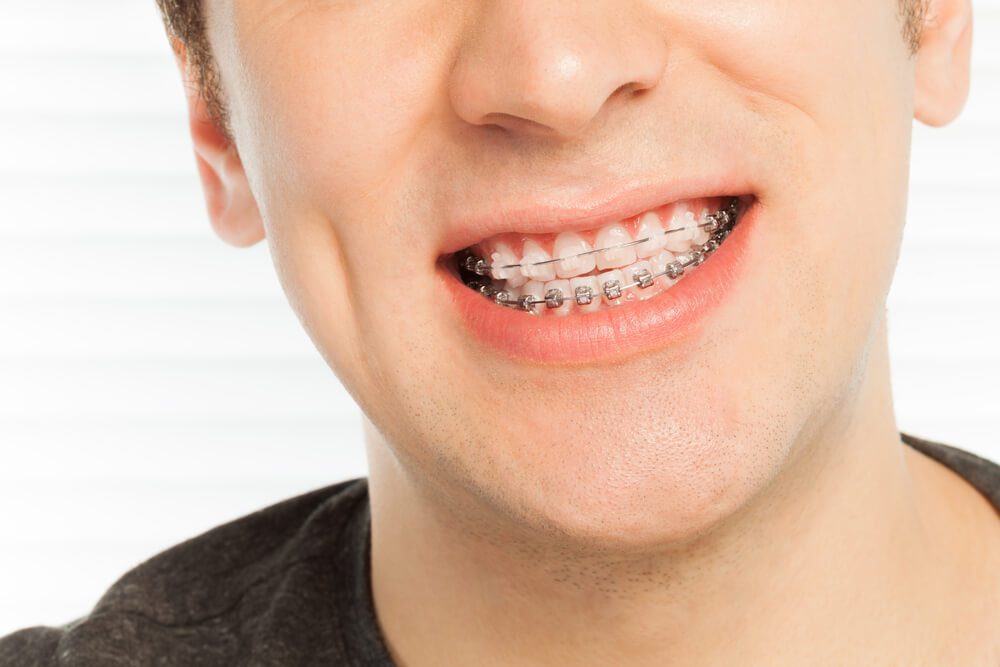Posted on May 25, 2023

Braces are an essential tool in correcting misaligned teeth. But, let’s face it; they can be incredibly uncomfortable. Soreness, irritation, and general discomfort are common during the orthodontic process.
Braces have come a long way in recent years, with new technology making them more comfortable than ever before. However, even with the advancements, they can still cause some discomfort.
As a result, patients need to learn how to manage the discomfort and get through the treatment with minimal pain.
When you first get braces, it’s normal to experience a bit of discomfort. However, there are things you can do to overcome it.
With the right tips and tricks, you can make the process more comfortable and get through it without too much pain. In this article, we’ll take a look at some useful tips and tricks for managing discomfort during life with braces.
Braces are a common orthodontic treatment that can correct misaligned teeth and improve your smile. However, the process of wearing braces can be uncomfortable and painful for many people.
Here are some tips on how to manage the discomfort associated with braces:
Oral hygiene is crucial when you have braces. The brackets and wires can trap food particles and make cleaning your teeth more difficult, leading to gum irritation and plaque buildup.
To avoid discomfort and keep your teeth and gums healthy, make sure to brush and floss regularly.
Use a soft-bristled brush and fluoride toothpaste to clean your teeth and gums gently. Floss threaders and interdental brushes can also help you clean the hard-to-reach areas around your braces effectively.
 Orthodontic wax is a soft and pliable material that can be used to cover the brackets and wires of your braces. It provides a barrier between your braces and your mouth, reducing the risk of scrapes and cuts.
Orthodontic wax is a soft and pliable material that can be used to cover the brackets and wires of your braces. It provides a barrier between your braces and your mouth, reducing the risk of scrapes and cuts.
If you experience discomfort or irritation from your braces, apply a small amount of wax to the affected area. You can also use wax to secure loose wires and brackets until you can see your orthodontist.
Pain and discomfort are common symptoms when you first get braces or after adjustments. Over-the-counter pain relievers such as acetaminophen or ibuprofen can help reduce pain and swelling.
However, always consult with your orthodontist before taking any medication, as they may have specific instructions for pain management during your treatment.
Eating hard or crunchy foods can increase the discomfort associated with braces, especially after adjustments. To reduce pain and irritation, choose soft and easy-to-chew foods.
Soups, smoothies, mashed potatoes, and scrambled eggs are good options. Avoid sticky and sugary foods, as they can increase the risk of plaque buildup and tooth decay.
Braces are a common orthodontic treatment that helps in correcting misaligned teeth and jaws. However, wearing braces can be uncomfortable, especially in the first few weeks of the treatment. Some lifestyle changes that can help make wearing braces more comfortable are:
Orthodontic treatment can cause some discomfort, but the adjustments you make to your lifestyle can help make the experience more comfortable.
By following these lifestyle changes, you can ensure that your braces treatment is successful without experiencing severe discomfort or dental problems.
If you experience persistent discomfort or pain with your braces, don’t hesitate to let your orthodontist know. They can make adjustments to your treatment plan or recommend additional measures to ensure your comfort.
Remember that the discomfort associated with braces is temporary and a small price to pay for a straight and healthy smile in the long run.
If you are considering braces, it’s important to know what to expect during the treatment process.
Orthodontic emergencies can happen at any time, and they can be quite scary to deal with. If you or your child has braces, it’s important to be prepared for any situation that may arise.
Let’s go over the steps you should take in case of orthodontic emergencies with braces.
 First, remain calm and assess the severity of the emergency. Determine if it is a true emergency that requires immediate attention or if it can be addressed temporarily until you can see your orthodontist.
First, remain calm and assess the severity of the emergency. Determine if it is a true emergency that requires immediate attention or if it can be addressed temporarily until you can see your orthodontist.
In any orthodontic emergency, it is crucial to contact your orthodontist as soon as possible. Explain the situation and follow their guidance for the next steps. They will provide instructions based on the nature of the emergency and schedule an appointment if necessary.
If you or your child is experiencing pain or discomfort, you can take over-the-counter pain relievers as directed on the packaging. Applying a cold compress to the affected area may also help alleviate swelling or soreness.
If a bracket or wire becomes loose or breaks, try to gently push it back into place using clean fingers or tweezers. Be cautious not to apply excessive force. If a loose wire is causing irritation, you can use orthodontic wax to cover the sharp end temporarily. Do not cut the wire yourself.
Orthodontic appliances may occasionally cause sore spots or ulcers on the soft tissues of the mouth. Rinse your mouth with warm saltwater to soothe the area. Applying orthodontic wax to the offending area can provide temporary relief. If the soreness persists or worsens, consult your orthodontist.
If a retainer, aligner, or any other orthodontic appliance is lost or damaged, keep the pieces safely stored and bring them to your orthodontist during your appointment. They will assess the situation and provide appropriate replacements if needed.
While orthodontic emergencies can be scary, it’s important to stay calm and take the appropriate steps to deal with the situation. By following these steps and contacting your orthodontist, you’ll be able to get the help you need and continue on your path to a beautiful, healthy smile.
Managing discomfort with braces can be challenging, but it’s important to remember that it’s a temporary phase of your treatment journey.
There are several tips and tricks to help you ease the discomfort, such as using orthodontic wax to reduce irritation from brackets and wires, taking pain relievers recommended by your orthodontist, and eating soft foods.
Remember to keep up with your oral hygiene routine and attend regular appointments with your orthodontist to ensure that your braces are working effectively. By taking care of yourself and your braces, you’ll soon be on your way to achieving a beautiful, healthy smile.
For comprehensive orthodontic care and support, turn to Smilebliss. Our dedicated team of orthodontic professionals is committed to providing personalized treatment and guidance to help you achieve a beautiful and healthy smile.
Contact Smilebliss today to learn more about our services and schedule a consultation.